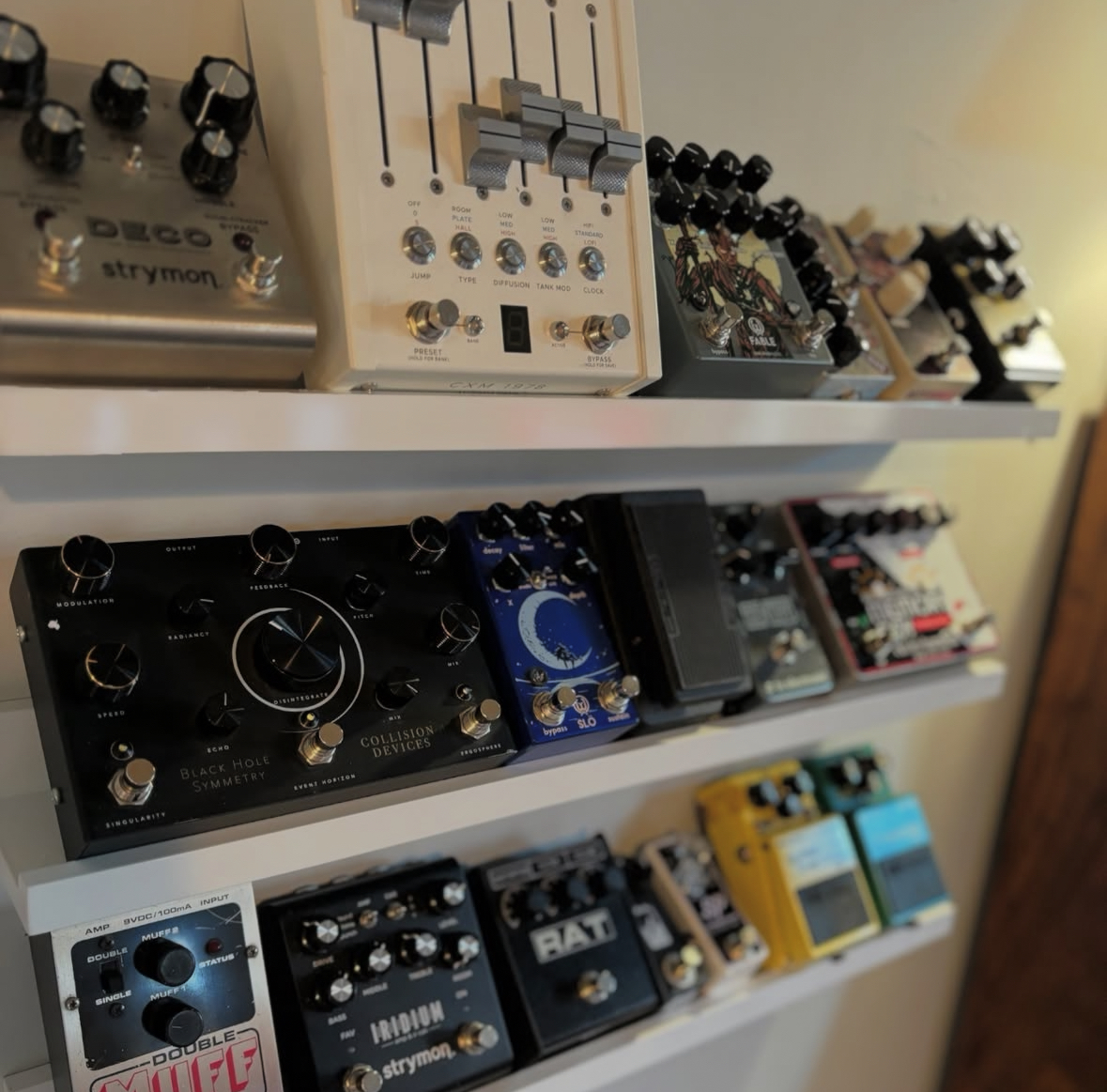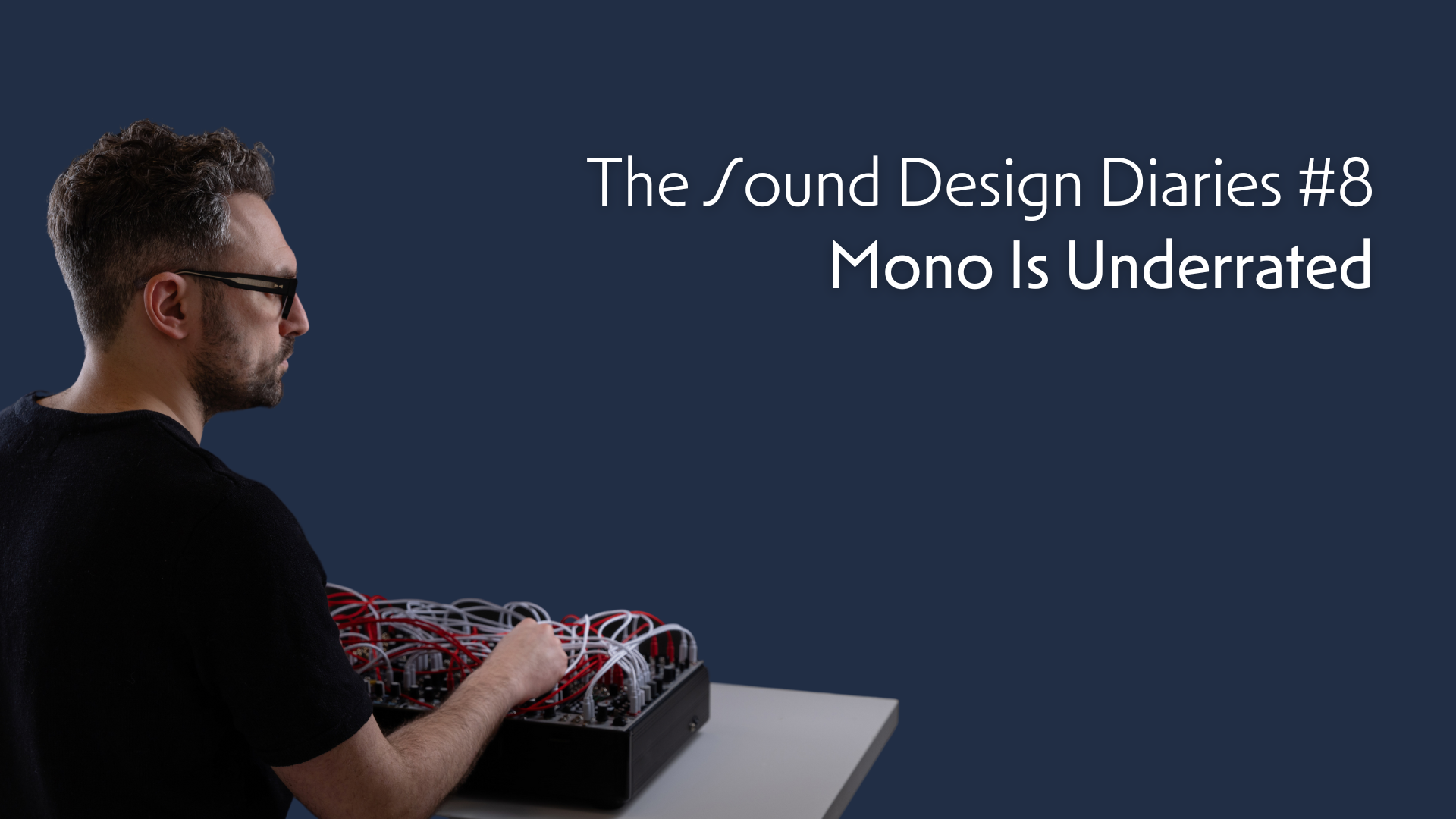The Sound Design Diaries #8: Mono Is Underrated
< BackMy very first love in the world of music and audio was the guitar.
No surprises there, I was in good company with millions of teenagers all over the world that between the late 90’s and the early 2000’s were trying to emulate their idols (I’m literally in the middle of a wave of nostalgia and my Spotify wrapped looks like it belonged to my 18 years old self with hits by Smashing Pumpkins and Godspeed You! Black Emperor, which is an amazing band by the way if you don’t know it).

I didn’t become a rock star as you probably guessed but I am very sure that my fascination with sound design started while playing guitar, the minute I discovered effect pedals.
I still collect and use these wonderful objects regularly, not exclusively on guitar.
Not to sound like a geriatric millennial but back then you could count the pedals with a stereo output on one hand and I can’t think of a single guitar player I knew in my circle of friends who ever thought about the guitar as a stereo instrument.
Even the reverb sound that we associated with guitars (not the “studio” reverb) was mono, specially that classic Fender amp sound with the tremolo circuit after the reverb: definitely mono.
And bear in mind: big rack units were way too 80ies/early 90ies so we just didn’t use them because they were old (good excuse as they were way too expensive for me).
Fast forward to today and it looks like delays, reverbs or even choruses don’t sell unless they’re stereo. Particularly in the last couple of years, companies are coming out with stereo versions of popular pedals released only a few years earlier as there’s a clear demand for them (the Walrus Audio SLOER and the Old Blood Noise Endeavour Stereo Dark Star are two notable examples).

Another thing I’m fairly obsessed with is Eurorack (I’m clearly incapable of picking a cheap hobby it looks like) and the same thing is happening there: companies like Make Noise are focusing their efforts on releasing (awesome) stereo modules. QPas, XPO and Spectraphon come to mind, but many others become available as the Eurorack format lives its best “stereo” era.
A similar trend is happening with hardware desktop units.
Excluding the DSP-based effects that are often built-in in these units, several hardware synthesisers base their stereophonic sound on the simple possibility of panning voices with various degrees of flexibility.
This is all well and good and I am an avid tweaker of the PAN SPREAD knob on my Sequential OB-6 myself, but as sound explorers we get easily bored and we need new ways to scratch our stereophonic itch.
The UDO Super 6 (2020) and Gemini (2023) for example are marketed as a polyphonic binaural synthesisers and seem to be very popular among musicians and sound designers.
Binaural means something rather different in a recording context of course but I think what the manufacturer is trying to convey is rather clear: the synthesiser allows the user to assign two voices to a single note, to pan them hard left and hard right, and to introduce variations to each one independently, resulting in interesting stereo images.
Don’t get me wrong: I love stereo, but I think as producers, composers, engineers, sound designers, artists… we’re missing out on mono big time.
Mono allows you to double, triple, quadruple-track as much as you like and then pan these channels in the stereo field.. not to mention its use in multi-channel audio and Atmos.
Cool things happen when we hear “the same thing but different” in the opposite audio channel.
Do you want something to sound truly wide and cinematic? Record it multiple times in mono, pan these signals across the stereo field, make a bus for all these and send THAT to a big lush stereo reverb.
Mono is cool.
- Tagged:
- Music
- Sound Design
